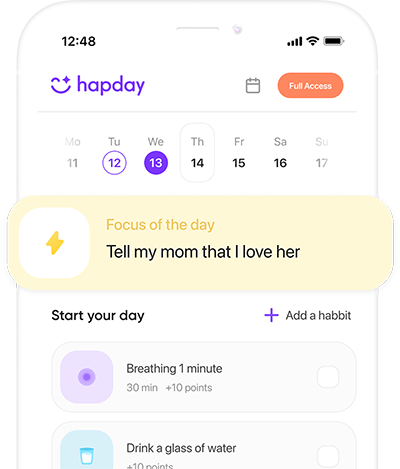Table of Contents
- Understanding ADHD and Burnout
- Identifying Symptoms of ADHD-Induced Burnout
- Practical Strategies for Managing ADHD-Induced Burnout
- Long-Term Strategies for Sustained Well-being
- Conclusion
Understanding ADHD and Burnout
What is ADHD?
Let’s start with the basics. ADHD is a neurodevelopmental disorder that’s the poster child for inattention, hyperactivity, and impulsivity. Per the CDC, 9.4% of kids and 4.4% of adults in the U.S have been diagnosed with this. It can make life a real rollercoaster—especially in school, work, and, yep, even hanging out with friends.
The Link Between ADHD and Burnout
Burnout itself—ugh, it’s that state where you’re just plain drained emotionally, physically, and mentally from stress overload. If you’re dealing with ADHD, burnout might rear its ugly head more often, all thanks to the extra load of symptoms and society’s oh-so-great pressures. A study from “Journal of Attention Disorders” back in 2020 pointed out that folks with ADHD are sitting ducks for burnout due to their unique neurological wiring and brain demands.
Identifying Symptoms of ADHD-Induced Burnout
Burnout doesn’t just kick in with a warning sign; it sneaks up slowly. So, what should you look for? Let’s break it down:
- Chronic Fatigue: Ever been tired after a full night’s sleep? Love that for you.
- Insomnia: Trouble catching Z’s or staying asleep once you do.
- Emotional Instability: Mood on a rollercoaster? Been there.
- Decreased Productivity: Struggling to finish tasks or hit deadlines.
- Detachment: Pulling away from social scenes or activities.
- Physical Symptoms: Headaches, nausea, and those stress-related gremlins.
Practical Strategies for Managing ADHD-Induced Burnout
1. Establish a Routine
The power of routine—seriously, it’s like a secret weapon for managing ADHD burnout. Structure brings predictability, and that’s a godsend when your brain is constantly buzzing. A study in “Psychiatry Research” confirms that routines can supercharge sleep and bust stress.
Steps to Implement a Routine:
- Daily Planning: Get cozy with planners or digital apps to map out tasks.
- Consistent Wake/Sleep Times: Wake up and hit the sack at the same times each day if you can swing it.
- Scheduled Breaks: Don’t forget to recharge. Insert breaks, or risk becoming a mental puddle.
2. Set Realistic Goals
Keep it real with your goals. You want to dodge that overwhelming feeling—one of burnout’s besties. Break big projects into bite-sized, less intimidating pieces.
SMART Goals Framework:
- Specific: Clearly jot down what you’re doing.
- Measurable: Define how you’ll know you’re making progress.
- Achievable: Be realistic with what you can accomplish with what you’ve got.
- Relevant: Make sure your goals jibe with your core values and big dreams.
- Time-bound: Set a deadline to keep yourself honest.
3. Practice Mindfulness and Relaxation Techniques
Mindfulness isn’t just trendy; it’s like therapy for your brain. Meditation, deep breathing—they can both help corral stress and sharpen your focus. A “Clinical Psychology Review” meta-analysis shows these methods knock ADHD symptoms down a peg and boost emotional regulation.
Recommended Practices:
- Guided Meditation: Apps like Headspace or Calm are great buddies for guided inner peace sessions.
- Deep Breathing: Master the art of diaphragmatic breathing to chill out.
- Progressive Muscle Relaxation: Relax those muscles, one group at a time, and say goodbye to tension.
4. Exercise Regularly
The magic of movement—I can’t stress it enough. Exercise ramps up serotonin and dopamine, those feel-good brain chemicals. A 2018 “Journal of Clinical Psychiatry” study showed aerobic exercise gives ADHD symptoms a solid pounding.
Exercise Tips:
- Find What You Enjoy: If you hate it, you’ll ditch it. Find an activity that’ll keep you coming back.
- Mix It Up: Balance your routine with cardio, strength, and flexibility moves.
- Set a Schedule: Aim for 150 minutes of got-your-heart-racing exercise weekly.
5. Seek Professional Help
Sometimes it takes a village, or at least a good therapist. Professional support is gold, offering tailored strategies to help navigate ADHD and burnout.
Therapeutic Interventions:
- Cognitive Behavioral Therapy (CBT): Change your mind’s channel from negative to positive.
- Occupational Therapy: Learn solid coping strategies for daily adventures.
- Medication Management: Talk shop with a psychiatrist about medication options.
6. Prioritize Nutrition
Your diet isn’t just fuel; it’s brain food. What you eat can either clear the mental fog or thicken it. A balanced plate supports sharp thinking and smooth moods.
Nutritional Strategies:
- Omega-3 Fatty Acids: From fish or flaxseeds, they’re essential for brain health.
- Complex Carbohydrates: Whole grains? Yes, please. They keep energy levels on an even keel.
- Hydration: Don’t forget to sip. Aim for eight cups of water daily to stay sharp.
7. Foster Social Connections
Never underestimate the power of a good chat or laugh. Social support softens burnout’s blows and can lift your mood when you’re down.
Ways to Build Connections:
- Community Groups: Find your tribe in ADHD support groups, be it online or face-to-face.
- Regular Check-Ins: Put in the calendar those weekly catch-ups with your tribe.
- Volunteer: Helping others helps you. It’s the feel-good booster shot you didn’t know you needed.

